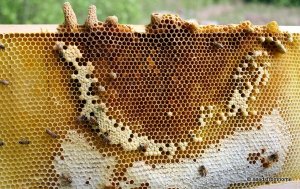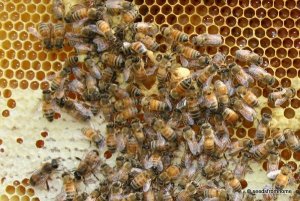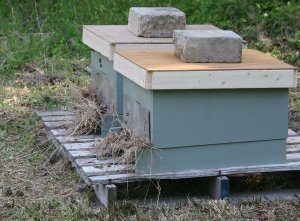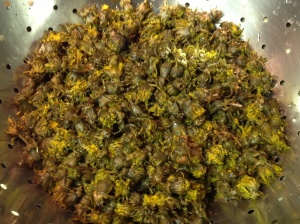There are some wonderful things associated with memorable moments in my life and this movie is one of them. It brings me right back to my early twenties and all that was happening in my life then with a clarity that reminds me once again what a pivotal set of moments this was in my life.
I was a 22-year-old mother of a 4-year-old child who was born with a heart defect. I was in many ways still a child myself. I was a stay-at-home mom by choice, a decision my husband and I wholeheartedly agreed on. It was easier to survive on one income then compared to how it is today yet it was still pretty darn tough. We lived in poverty, from paycheck to paycheck, here and there receiving assistance from the Women, Infants and Children program as well as a time or two where we were grateful to qualify for and receive Food Stamps. Those programs got us through some lean times for sure.
So much was going on with me. I was doing my best to do what I thought I was supposed to do. I remember asking my sister-in-law, who became a mother at an age even younger than me, “Is this it? We just pop out babies, drink coffee, clean, watch soaps?” And her reply of “Yeah, pretty much!” It was the first time I realized how much meaning was placed on the roles outside the home and so little on those inside the home.
My son, Jeffrey and I were closely bonded. We sorta grew up together those first years. We were alone together a lot and found lots of things to do to keep us occupied. We talked a lot. I always asked him “What do you think?” Or “How do you feel about it?” and would get the most interesting answers. At the age of two the answers were short and to the point as he was learning to communicate with me. As his vocabulary expanded it brought some really interesting perspectives on the many questions within life through the wisdom of a toddler.
As I can see it so clearly now with my grandchildren, babies are input machines. They soak in – eat, sleep, breathe, feel – EVERYTHING about our environment as quickly as their little brains and bodies will allow. Curious about everything and everything is input. When they have something to say and can pick the words out of those they’ve been given to communicate with, sometimes what comes out of the mouths of babes can be profound.
That summer before Jeffrey’s fourth birthday was when we watched The Never Ending Story together. It was a story about a young boy coming to terms with his death of his mother. We watched it over and over and over again. Together we followed Bastian on his journey to defeat the nothing. We were with him being chased down the street by a gang of boys, we were with him in the book store. It was as magical to both of us as it seemed to be to Bastian.
We talked about the emotions and questions the movie brought up for each of us. Artax and Atreyou in the swamp moved us to tears together. We talked about why it felt so sad. As the Nothing raced across the land spreading its fear and darkness we jumped and gasped together at the first sight of the wolf and his glowing eyes. It prompted us to talk about our fears and what we can do about them.
I do my best not to talk down to my children. I believe they arrived in my life with more wisdom than I will ever possess. I do my best to honor their intelligence and tell the truth in the best way I can. I speak in language that isn’t baby talk or dumbing it down, but is age appropriate and real. I believe there is a part of them that may not understand the intricate meanings of the words but can get the essence of them regardless.
Just after Jeffrey turned four he was scheduled for open heart surgery. It was to be the first of a two-part series of surgeries to correct his heart defect. He would then have the second part when he turned five. We arrived at the hospital prepared to stay for about a week. Although the hospital was only twenty minutes from my home I chose to sleep there in the room with my son. I didn’t have my own car to travel back and forth and even if I did, I’m not sure I could have left him there alone.
The first night was spent preparing for early surgery the next day. Papers were signed, questions were asked and answered and we were all a little on edge. After Jeffrey laid down to sleep for the night his nurse suggested I go over to the playroom where several moms who were also spending the night had gathered. I was homesick, lonely and afraid and it sounded like a great idea.
There were four or five women sitting in a circle of rocking chairs chatting when I entered the room. I made my greetings and took a chair to become part of the circle. Topics moved across the small talk spectrum for a few minutes when it got to movies. One mom asked if anyone had seen The Never Ending Story. Most replied that they had and how scary it was. I added that my son and I watch it together all the time. Suddenly I felt pounced upon. “How old is your son? Four years old and you let him watch that? That’s insane. You don’t do that to a child. It’s too scary for them.” Etcetera and on and on. I was instantly the worst mother ever born.
I left the room feeling more homesick than ever. I called my husband and cried on the phone but all I could say was how homesick I was. I had trouble communicating what had just happened in the playroom and how it made me feel. The Never Ending Story had been a beautiful bonding experience between me and my child and it was something I treasured. To have no chance to even explain that to these women and to have been so set upon with such judgmental hatred had really upset me. Five out of six women agree that you suck as a mother, Lisa. Majority rules, right? It must be true.
Thankfully, there is always a dawn after a dark night of scary storms. The morning of the surgery had arrived and we were anxious. Jeffrey was bright and happy and ready to get started so he could feel better. If he was afraid, he never showed it. We trusted and believed we would see each other in the recovery room. And we did.
For the rest of the week in the hospital I did my best to encourage and support my son in his recovery. I avoided any contact with the playroom moms. Sometimes our eyes met in the hallways or elevators but there was no more conversation. There didn’t need to be as the lines were clearly drawn. As sure as they were that I sucked as a mother I was equally sure that they were dead wrong. The evidence of that was in my child and my relationship with him and THAT was all I needed to put their negative voices to rest in my mind.
I do wish I had been able to communicate my story in the playroom as an example of how they might bond with their children over things like scary movies. I feel it’s such a gift to both mother and child to have that kind of soul connection. So much of what we are taught to do as parents is about authoritarianism and bending our children to our will in obedience, mostly because as adults we are supposed to know better and know what is best for them. But what if we don’t? What if our children are as equally our teachers as we are theirs?
So, there’s one of the “untold stories” of my early days of motherhood and figuring out how to be the best version of myself in a world that I sometimes seem to have little in common with. It felt important to finally document this time in my life.






















